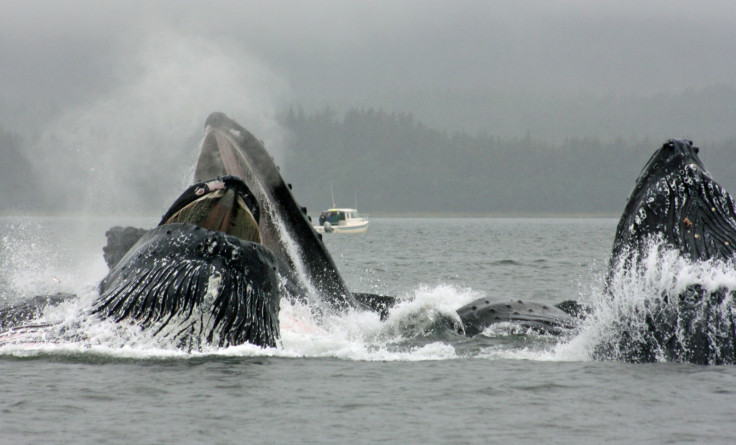How the largest predators on Earth hunt their prey
Whales use unique strategies to attack each type of prey.
Whales are the largest carnivores on the planet, and they have well-honed hunting tactics. Humpback whales stalk their prey before lunging open-mouthed to engulf as much of it as possible.
Using electronic tags and cameras attached to humpback whales, scientists have tracked what happens as the last moments of the whales' prey approach. Their lunges are finely tuned to make them as effective as possible given the species and agility of the prey they are trying to eat.
"Our results illustrate the complex balance between whale attacks and fish escape responses, and how the lunge characteristics of the whales may be related to the escape abilities of targeted prey," said Paolo Domenici of Italy's National Research Council, who is presenting the findings at a meeting of the Society for Experimental Biology.
Accurate lunges are crucial for whales' survival. Whales are so big that virtually any movement requires a great deal of energy. Poor lunges resulting in no food could lead to malnutrition and exhaustion in the whales.
"Any aspect which increases the potential success of these lunges is beneficial," said Jeremy Goldbogen of Stanford University, also a study author.
Humpback whales have several sources of prey, including krill, herring, sardines and anchovies. Each requires its own strategy for approach.
"Anchovies are likely to swim faster and cover greater distances compared with krill, and so may have better ability to escape an oncoming whale," said Nicholas Carey of Stanford University, also an author of the study. "We think that these different characteristics may require varying attack strategies by the whales."

But faster prey doesn't necessarily mean that a faster lunge is needed, the researchers found. In fact, when chasing after fish rather than krill, humpback whales actually moved more slowly. Exactly why this is the case is not yet clear.
"Anchovies are among the most abundant fish in the oceans, forming vast schools of millions of individuals and are targeted by a multitude of predators," said Carey. "Because of this, they have evolved to be speedy, vigilant and highly responsive to approaching threats."
© Copyright IBTimes 2025. All rights reserved.






















